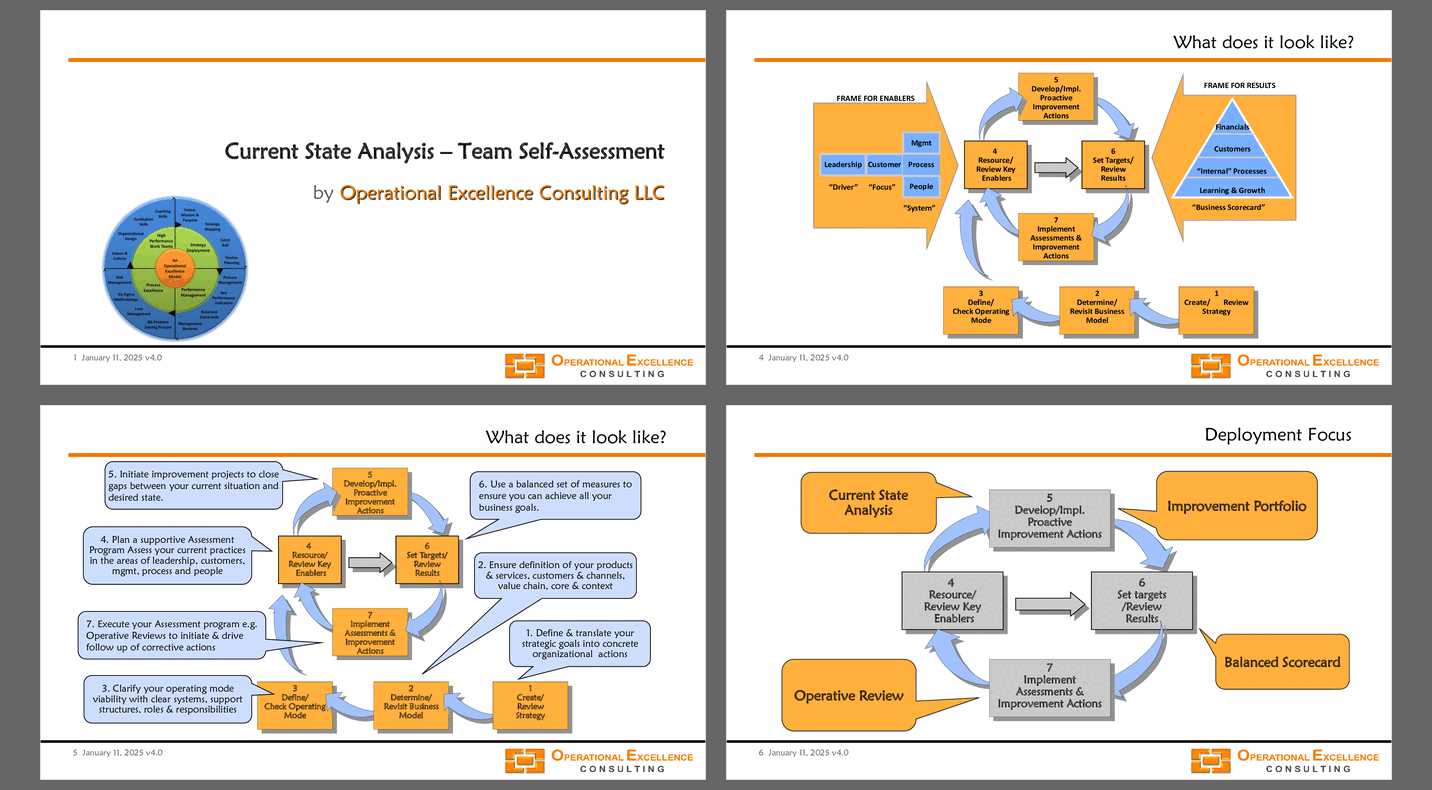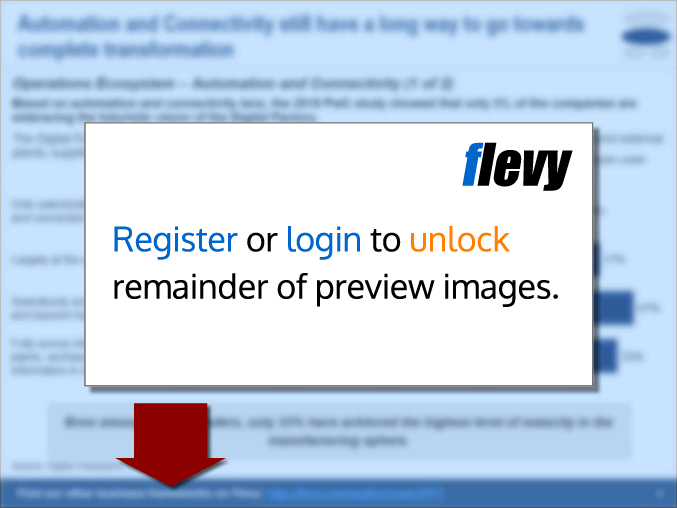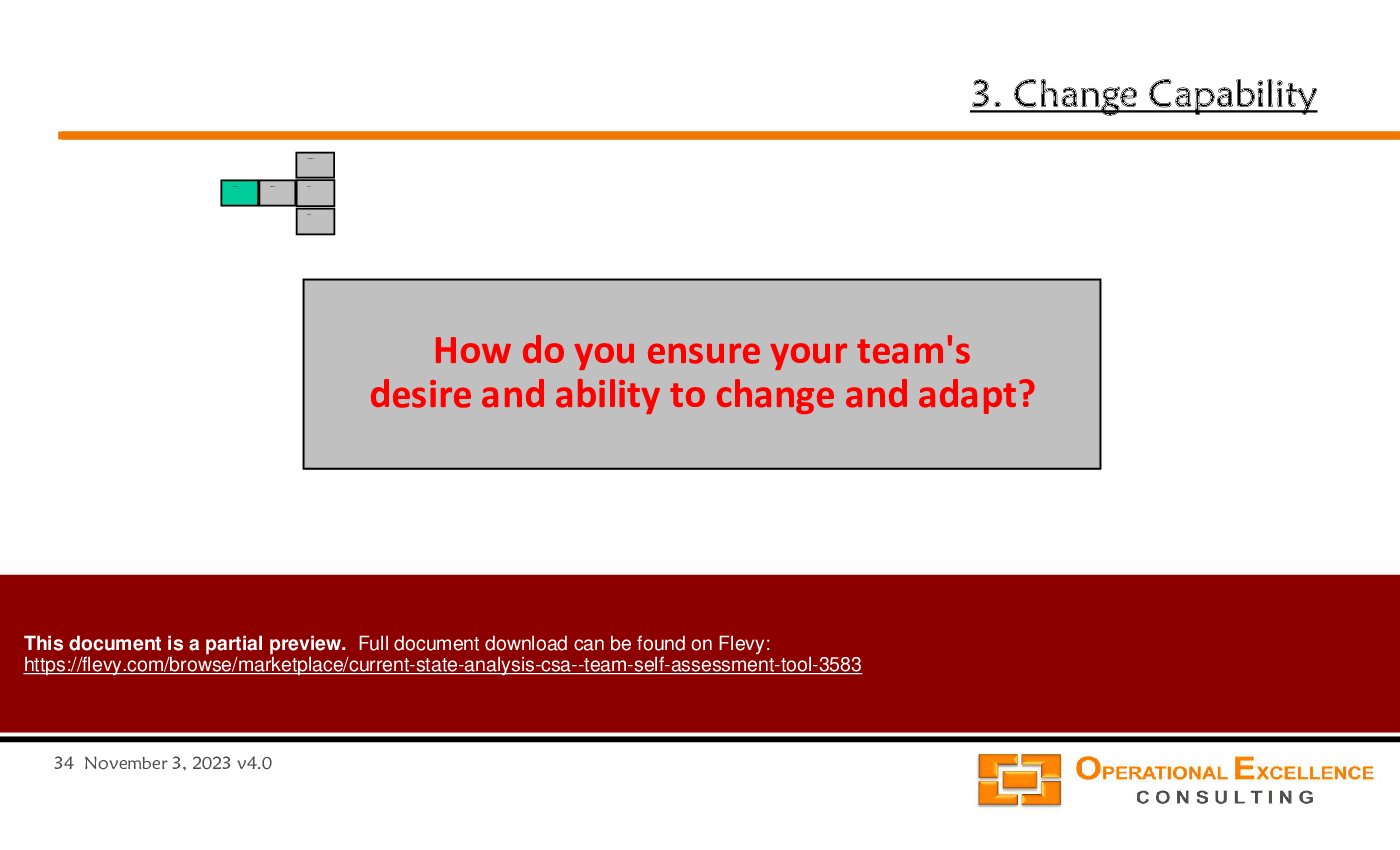Current State Analysis (CSA) - Team Self-Assessment Tool (PowerPoint PPTX Slide Deck)
PowerPoint (PPTX) + Excel (XLSX) 110 Slides
BENEFITS OF THIS POWERPOINT DOCUMENT
- First, this team self-assessment ensures you are spending team building time on the right topics.
- Second, even when you have accurately identified the most urgent team needs, hearing from all members of the team provides additional information to make your team building time more productive.
- Third, giving members of the team a voice in shaping their work together increases their level of interest, buy-in and commitment.
CURRENT STATE ASSESSMENT PPT DESCRIPTION
Teamwork has a dramatic effect on organizational performance. An effective team can help an organization achieve incredible results.
Our team self-assessment is based on the Malcolm Baldrige Excellence Model and the European Foundation for Quality Management (EFQM) Excellence Model.
You can use this team self-assessment on your own or with your team to assess the strengths and weaknesses of your team. Try to provide evidence to support your assessment of the strengths of the team. We recommend performing the team self-assessment on an annual basis to assess the strengths and weaknesses of your team, as well as the improvements made over the past year.
The Current State Analysis (CSA) – Team Self-Assessment Module includes:
1. MS PowerPoint Presentation including 110 slides covering the Current State Analysis – Team Self-Assessment methodology and questionnaire. The self-assessment includes 25 detailed questions from 5 focus areas: Leadership, Customer, Management, Process, and People. Several slides include notes to explain the approach and facilitation in detail.
2. MS Excel Current State Analysis – Team Self-Assessment Summary Report Template
"After you have downloaded the training material, you can change any part of the training material and remove all logos and references to Operational Excellence Consulting. You can share the material with your colleagues and clients, and re-use it as you need. The only restriction is that you cannot publicly re-distribute, sell, rent or license the material as though it is your own. Thank you."
The CSA tool provides a structured approach to evaluate and enhance team performance across five critical focus areas. It emphasizes leadership, customer focus, management, process optimization, and people development. The methodology is designed to foster proactive improvement actions, set clear targets, and review results systematically. By implementing assessments and prioritizing improvement actions, teams can achieve measurable progress. The tool also includes a detailed scoring system to gauge implementation effectiveness and maturity levels, ensuring that all aspects of team performance are comprehensively addressed.
Got a question about the product? Email us at support@flevy.com or ask the author directly by using the "Ask the Author a Question" form. If you cannot view the preview above this document description, go here to view the large preview instead.
Source: Best Practices in Current State Assessment, MBNQA PowerPoint Slides: Current State Analysis (CSA) - Team Self-Assessment Tool PowerPoint (PPTX) Presentation Slide Deck, Operational Excellence Consulting LLC
CURRENT STATE ASSESSMENT PPT SLIDES













